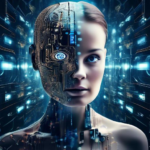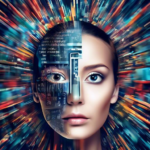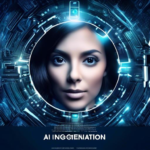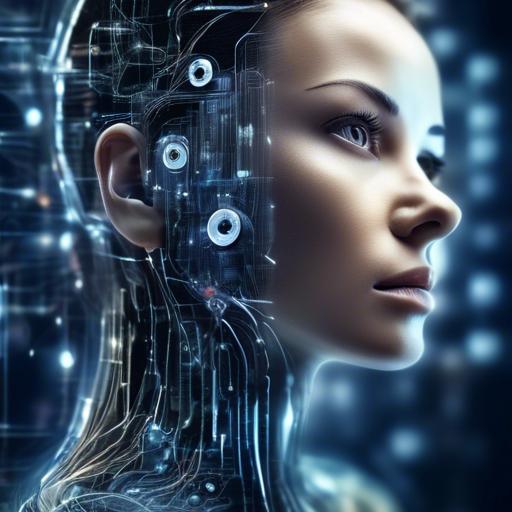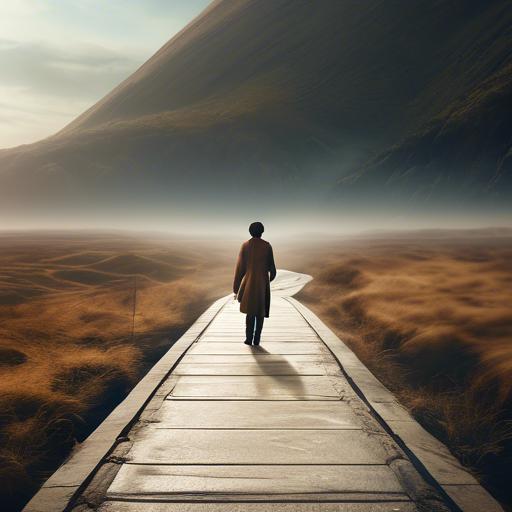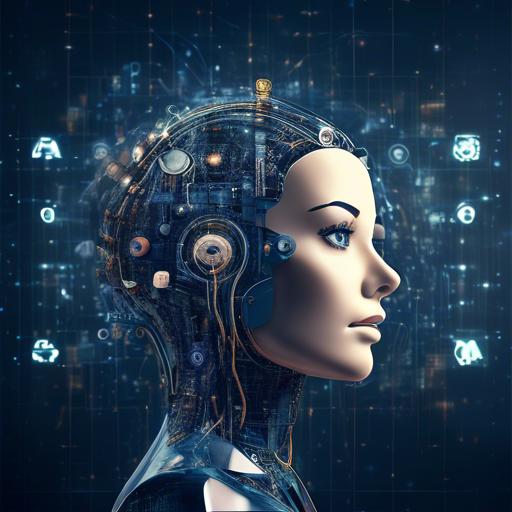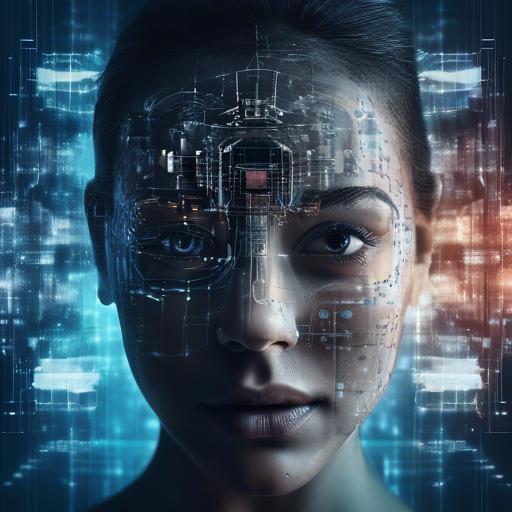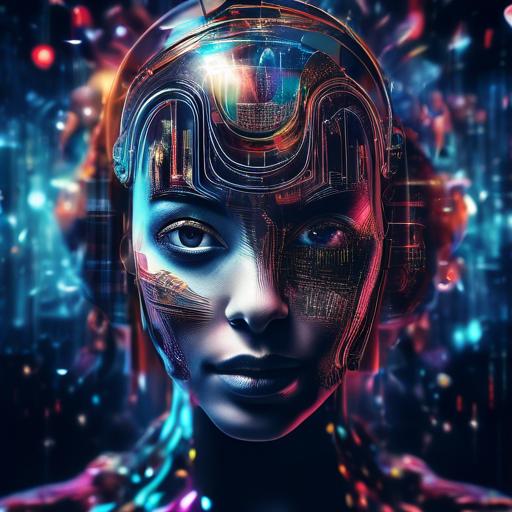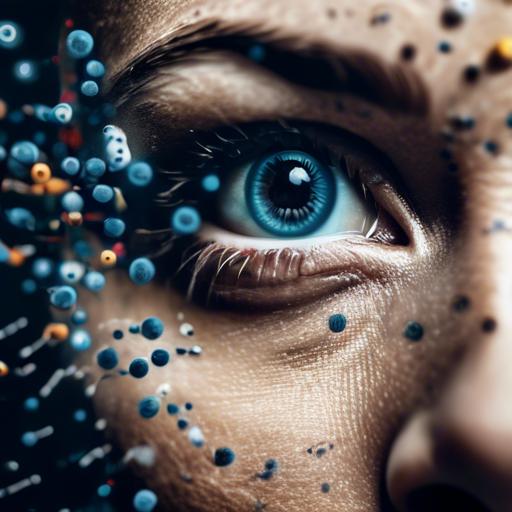In a world increasingly colored by the pixels of progress, the magic of technology is no longer confined to the realm of the tech-savvy elite. The doors to creativity have swung wide open, inviting everyone to partake in its wonders. Among these marvels, AI image generation stands as a beacon, transforming mere ideas into vivid visuals with just a few clicks. The best part? You don’t need to be a coder or a geek to dive into this treasure trove.
Welcome, dear reader, to a journey where imagination meets innovation in the most exhilarating way. Whether you’re an artist seeking new vistas, a marketer in search of fresh content, or simply someone who loves to dabble in creative endeavors, this guide is your supportive companion, here to demystify AI image generation. Let’s break down the barriers, clear the fog, and venture into this enchanting world together. Get ready to discover just how accessible and extraordinary the fusion of artificial intelligence and artistry can be, even if you aren’t a techie.
Table of Contents
- Understanding AI Image Generation: A Beginners Guide
- Decoding the Jargon: Key Terms Simplified
- Choosing the Right AI Tool for Your Needs
- Step-by-Step: Creating Your First AI-Generated Image
- Overcoming Common Challenges and Best Practices
- Exploring Creative Applications: From Art to Marketing
- Respecting Ethics: Responsible Use of AI Image Generators
- Future Outlook
Understanding AI Image Generation: A Beginners Guide
AI image generation might sound like a sci-fi concept, but it’s becoming more accessible and understandable, even for those without a technical background. At its core, AI image generation leverages machine learning algorithms to create visual content from data inputs. This technology opens up a world of possibilities for creativity and productivity.
To get started, it’s essential to understand how AI generates images. The process often involves training a generative model on a vast dataset of images. Over time, the model learns to recognize patterns and features within these images, allowing it to create new, original visuals. Think of it as teaching an artist to paint by showing them millions of paintings. The types of AI models commonly used include:
- Generative Adversarial Networks (GANs): These involve two neural networks competing against each other to improve image generation quality.
- Variational Autoencoders (VAEs): These focus on learning efficient data representations for generating images.
- DALL-E: A powerful model by OpenAI that can generate detailed images from textual descriptions.
One practical application of AI image generation is creating marketing materials. Imagine you need a series of themed images for a campaign but don’t have the budget for a professional photoshoot. AI tools can generate high-quality images tailored to your specific needs—saving time and money. Here’s a quick overview of AI image tools you might find useful:
| Tool | Description |
|---|---|
| DeepArt.io | Transforms photos into artworks using AI. |
| NVIDIA GauGAN | Turns sketches into photorealistic images. |
| Artbreeder | Uses GANs to generate and mix images creatively. |
For non-techies, the thought of diving into AI image generation can be daunting. However, today’s tools are designed with user-friendliness in mind, often requiring no more than a few clicks to produce stunning visuals. Most platforms also offer extensive tutorials and customer support to help you get started.
Decoding the Jargon: Key Terms Simplified
Welcome to the world of AI image generation! It’s a fascinating and often bewildering field, filled with jargon that can make your head spin. But don’t worry, we’re here to break down some of the key terms to make everything crystal clear.
Algorithm: Think of an algorithm as a recipe. Just like how a recipe guides you through the process of cooking a dish, an algorithm guides the AI through the process of generating an image. It’s a step-by-step set of instructions that the AI follows to produce the final output.
Neural Network: This term might sound intimidating, but it’s simply a collection of algorithms designed to recognize patterns. Imagine a network of interconnected nodes, each learning to identify different aspects of an image. Together, they contribute to generating highly detailed and cohesive images.
Generative Adversarial Network (GAN): A GAN is like a game between two players: the Generator and the Discriminator. The Generator creates images that try to look real, while the Discriminator analyzes these images to determine if they are real or fake. Over time, this rivalry hones the Generator’s ability to produce incredibly realistic images.
Common Terms and Their Simplified Definitions
| Term | Definition |
| Training Data | The data used to teach the AI. Think of it like a textbook full of examples. |
| Deep Learning | A type of machine learning that mimics the human brain, using layers of neural networks. |
| Pixel | The smallest unit of an image. Like a single point in a dot-to-dot drawing. |
| Resolution | The detail an image holds. Higher resolution means more detail. |
By understanding these basic terms, you’ll be better equipped to dive into the world of AI image generation. Remember, every expert was once a beginner! Take it step by step, and soon you’ll find yourself speaking the language of AI with ease.
Choosing the Right AI Tool for Your Needs
When diving into the realm of AI image generation, the plethora of tools available can be overwhelming, especially if you’re not well-versed in tech. To ensure you select a tool that aligns with your needs, consider the following factors:
- Ease of Use: For non-techies, a user-friendly interface is crucial. Look for tools that offer drag-and-drop features, intuitive navigation, and comprehensive tutorials.
- Quality of Output: Not all AI tools produce the same quality of images. Check user reviews, sample galleries, and demo versions to gauge the quality before committing.
- Customization Options: Depending on your project, you might need varying levels of customization. Some tools offer extensive editing capabilities, while others provide more automated solutions.
- Cost: Budget is always a factor. Some tools might offer free versions with limited features, while others require a subscription. Evaluate what fits best within your financial plan.
Popular AI Image Generation Tools
Below is a comparative table of some popular tools you might consider:
| Tool | Ease of Use | Output Quality | Customization | Cost |
|---|---|---|---|---|
| DALL-E | High | Excellent | Moderate | Subscription |
| DeepArt | Moderate | High | High | Freemium |
| Artbreeder | Very High | Good | Low | Free |
It’s also worth considering the specific outcomes you’re aiming for. If you need high-quality artistic renditions, tools like DeepArt and DALL-E may serve you better. For simple, quick creations, Artbreeder could be the way to go.
Remember, there’s no one-size-fits-all solution. Experiment with different tools to see which aligns best with your creative needs and skill level. Happy image creating!
Step-by-Step: Creating Your First AI-Generated Image
Ready to embark on the exciting journey of generating your first AI-created image? Let’s dive right in! This process is far simpler than you might imagine and incredibly rewarding. Follow these steps to bring your creative vision to life without needing a deep technical background.
Choose Your AI Platform: There are several user-friendly AI image generation platforms available. Some popular options include:
- DeepArt: Known for its ability to turn photos into classic artwork styles.
- RunwayML: Perfect for generating images using simple text prompts.
- Artbreeder: Ideal for creating composite images with collaborative editing features.
Getting Started: Once you’ve chosen your platform, sign up for an account if necessary. Most platforms offer free trials or basic accounts to get you started. After logging in, explore the interface and check out sample projects if available.
Upload Your Base Image or Text Prompt: Depending on the type of tool you’re using, you might need a base image to apply AI transformations to, or you may start with a simple text prompt. For instance, with DeepArt, you can upload a photo and select an art style. With RunwayML, you can input a description like “a serene mountain landscape” to generate an image.
| Platform | Special Feature | Best For |
|---|---|---|
| DeepArt | Transforms photos into famous artistic styles | Art enthusiasts |
| RunwayML | Generates images from text description | Creatives with a vision |
| Artbreeder | Collaborative image creation | Community-oriented creators |
Customize and Refine: Most AI platforms will provide options to tweak the results. Adjust colors, styles, and other parameters until the image looks just right to you. Don’t hesitate to experiment with different settings to see how they change the outcome.
Once satisfied, download your new AI-generated image. Congratulations! You’ve successfully created artwork using the power of artificial intelligence. Share it with friends, use it in your projects, or just enjoy the creativity that technology has enabled you to explore.
Overcoming Common Challenges and Best Practices
Jumping into the world of AI image generation can be daunting, especially if you’re not a tech expert. Common obstacles tend to arise, but understanding these challenges and how to overcome them can make a significant difference. Let’s talk about how to navigate these hurdles with ease.
- Understanding Technical Jargon: It’s easy to feel overwhelmed by terms like “neural networks” and “latent space”. Start by breaking down these terms into simpler language. Think of neural networks as a series of interconnected “nodes” that work like neurons in the brain. Latent space? Imagine it as a hidden dimension where the AI stores learned information for creating images.
- Getting the Right Tools: A plethora of AI image generation tools exist, but not all are beginner-friendly. Free and intuitive platforms like DALL-E Mini or Canva with AI features are excellent starting points. These tools provide user-friendly interfaces that don’t require extensive technical knowledge.
| Tool | Best For | Cost |
|---|---|---|
| DALL-E Mini | Basic Image Generation | Free |
| Canva | Easy Editing | Freemium |
| Artbreeder | Advanced Customization | Freemium |
**Improving Output Quality:** Sometimes, the generated images may not meet your expectations. Enhancing the quality involves a bit of trial and error. Don’t hesitate to experiment with different keywords and settings. Many tools offer sliders for adjusting parameters like “creativity” or “style”; play around with them to see dramatic differences in the results.
**Harnessing Community Insights:** Joining online communities like Reddit’s AI art subreddits or forums dedicated to AI tools can also provide valuable insights. These spaces allow you to ask questions, share experiences, and learn from others who have faced similar challenges. Becoming a part of these communities offers collective wisdom and support.
- Experiment Continually: The more you play around with different settings, the better you’ll understand what works for your projects.
- Seek Tutorials: YouTube and other platforms are filled with easy-to-follow guides targeted at non-techies.
- Stay Updated: AI technology is rapidly evolving. Regularly check for updates and new tools that could simplify your tasks.
Exploring Creative Applications: From Art to Marketing
Utilizing AI image generation goes well beyond just creating stunning digital art; it opens up endless creative possibilities. Whether you’re a marketer looking to elevate your campaign or an educator aiming to make lessons more engaging, AI offers tools that can transform the way you work.
For **artists**, AI can be a powerhouse of inspiration and efficiency:
- Generate unique textures and patterns in seconds.
- Experiment with different styles without hours of manual adjustments.
- Collaborate with AI to bring abstract ideas into visual form.
**Marketers** find AI-generated images particularly beneficial for:
- Creating eye-catching ad visuals that captivate the audience.
- Personalizing content to better align with target demographics.
- Automating the production of social media graphics, saving time and resources.
Below is a quick comparison of traditional methods vs. AI-assisted techniques for varied applications:
| Application | Traditional Method | AI-Assisted Method |
|---|---|---|
| Art Creation | Manual Drawing | AI Image Generation |
| Marketing Campaigns | Stock Photos | Custom AI Images |
| Educational Content | Text-based | Interactive AI Visuals |
Even if you’re not tech-savvy, numerous **user-friendly AI tools** make it easy to get started:
- Canva’s AI Image Generator: Perfect for quick, professional-grade graphics.
- Artbreeder: Blend different images to create something entirely unique.
- DALL-E: Generate complex images from textual descriptions effortlessly.
These platforms ensure you don’t need a deep understanding of AI to produce exceptional visual content. With just a few clicks, you can bring your creative visions to life, opening up new avenues in both art and marketing.
Respecting Ethics: Responsible Use of AI Image Generators
Harnessing the power of AI image generators can unlock incredible creativity, but it’s crucial to stay grounded in ethical principles. As these tools become more accessible, adhering to a **responsible approach** can ensure a positive impact on society. Here are some key considerations to guide you.
- Consent is Key: Always acquire necessary permissions when using images of individuals. Even though AI can generate completely new images, any resemblance to real persons requires due diligence.
- Avoid Harmful Stereotypes: AI models can unintentionally perpetuate biases. Use tools mindfully to avoid reinforcing stereotypes or creating potentially offensive content.
- Respect Original Works: Many AI models are trained on vast collections of existing art. Ensure your creations respect the original artists’ rights and acknowledge sources if applicable.
Transparency should also be at the forefront of AI image generation. Ensuring your audience is aware that an image is AI-generated can maintain trust and integrity. **Label your AI creations** clearly to differentiate them from human-made content.
| Ethical Practice | Reason |
|---|---|
| Clear Attribution | Maintain transparency and acknowledge contributions. |
| Informed Consent | Respect privacy and personal rights. |
| Avoid Offensive Content | Prevent harm and promote inclusivity. |
Upholding these standards doesn’t just protect others; it elevates the overall quality and impact of your work. By creating a respectful and considerate digital environment, you contribute to a healthier, more trusted online ecosystem. Let’s collectively promote **ethical AI use** and celebrate the human creativity that drives these technologies forward.
Future Outlook
As we wrap up our exploration of AI image generation for non-techies, I hope you now feel equipped with the knowledge and confidence to dive into this exciting field. Remember, you don’t need to be a computer whiz to harness the power of artificial intelligence for creating stunning images. Whether you’re a budding artist, marketer, or simply someone who is curious about the future of technology, there are endless possibilities waiting for you to explore. So go forth, experiment, and unleash your creativity with AI image generation – the sky’s the limit!


